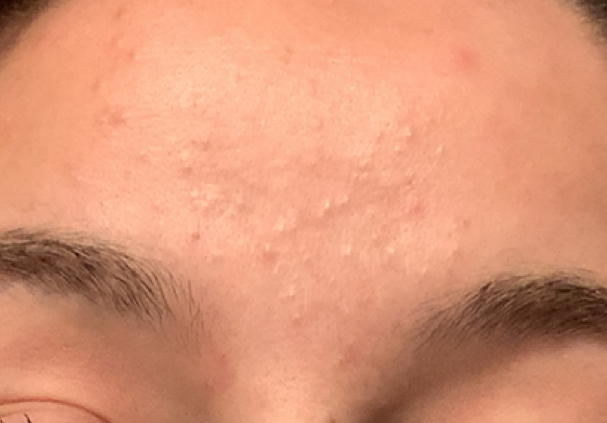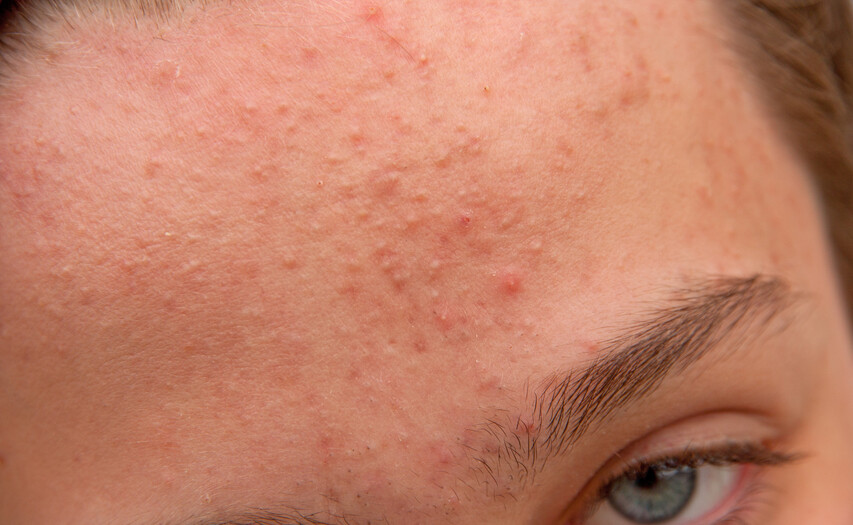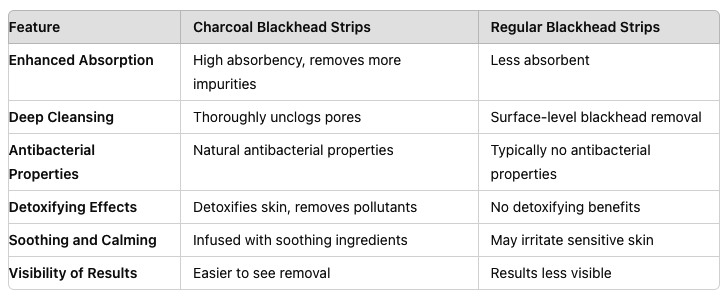Comedones: what are they and how do I treat them?

Active, inflammatory acne is a skin disorder involving our skin's oil glands (sebaceous glands). The skin oil (sebum) normally flows out of these glands and spreads evenly over the skin. However, some of these glands' openings are clogged by "plugs" made of dead skin cells and dirt for people with acne, creating what we call "comedones."
When the plug is deeper in the oil gland, it has a whitish color (e.g., white comedo or whitehead). When this plug is exposed to the air, it oxidizes and generates a darker-looking color (e.g., blackheads). When the skin oil glands are clogged, acne bacteria grow in the glands and trigger the skin's immune system. Our skin immune system starts an inflammatory process, producing typical acne red pimples (acne papules) or pus-filled lesions (pustules).
What causes comedones?
Comedones can be caused by a few factors, mainly familial tendency (genetics) and hormonal fluctuations. Some of the more common causes are oily or greasy hair products spread over the forehead and temple area and baseball hats or headbands that rub on the forehead skin. External factors that clog skin pores can also cause comedones.

What are the different types of comedones:
Blackheads (open comedones) appear as dark brown/black "dots" at the pore's surface. Blackheads are often found on the nose and appear on other face and body areas.
Whiteheads (or closed comedones) are small, 1-2 mm "bumps" in the skin. Whiteheads are located deeper in the pore, with only a microscopic opening to the skin surface. Since the air cannot reach the follicle, the material is not oxidized and remains white or appears "closed."

How do you get rid of comedones?
Treatment of comedones—both whiteheads and blackheads—takes time. Most treatments take several weeks to months before a noticeable change occurs. The best thing to do is start and commit to a good skincare routine with the right, medicated ingredients in proper doses according to skin type, sensitivity, and acne severity.
Best cleansers for comedones:
Adequate pore cleansing is essential for long-term management of all acne types. In the case of comedones, the best choice is a medicated cleanser that contains salicylic acid. To avoid overdrying the skin, these cleansers should be personalized to the user's skin type. People with dry or normal skin types should use a cleanser with a lower percentage of Salicylic Acid (0.5%), whereas people who experience more oil on the skin should use a higher percentage (2%).
Best moisturizers for people with comedones.
Skin dryness increases the risk of dry, dead cells accumulating in the oil glands' openings, causing invisible small whiteheads (aka micro comedones) and visible comedones (regular blackheads and whiteheads). To reduce comedones, people with acne-prone skin should look for day creams labeled oil-free or non-comedogenic. Unfortunately, most moisturizers can clog skin pores and cause more comedones and acne breakouts. Niacinamide-based moisturizers can hydrate the skin and further reduce the risk of clogged pores.
Best treatment creams for comedones:
Salicylic acid, benzoyl peroxide, and retinoids (retinol/retinoic Acid) are the best topical treatments for preventing and treating comedones.
Salicylic Acid:
Originally derived from the willow tree bark, Salicylic Acid is an FDA-cleared anti-acne medical ingredient. Salicylic Acid is the single best medical-grade ingredient for the treatment of clogged pores. What makes it so great? Salicylic acid is "fat-loving" or "lipophilic" beta hydroxy acid. Salicylic acid's ability to penetrate the oil gland makes it highly effective at binding to and melting the keratin plugs that clog the skin pores. In addition to this "keratolytic" effect, Salicylic Acid provides additional anti-acne effects:
1) Salicylic acid is a key factor in the plant's immune system that helps unclog skin pores, reduce skin oiliness, and help reduce P. acnes bacteria.
2) Salicylic acid can help reduce redness, acne inflammation, and swelling (* it's one of the aspirin's key ingredients!)
3) Its oil solubility allows Salicylic Acid to penetrate and unclog pores easily and helps reduce sebum production and excess oil on the skin's surface.
Shop:
Medicated Salicylic acid 0.5% Acne Cleanser (Amazon)
Medicated Salicylic acid 2% Acne treatment cream (Amazon)
Benzoyl Peroxide:
While Salicylic Acid is the best ingredient for comedones, Benzoyl Peroxide Is the single most effective topical anti-acne ingredient. Benzoyl peroxide has an antibacterial effect and may also decrease the chemical reaction that changes the hair follicle's lining. Salicylic acid also has a keratolytic effect, which helps unclog pores and prevent new comedones from forming.
Shop:
Medicated Benzoyl Peroxide 2.5% Acne treatment cream (Amazon)
Medicated Benzoyl Peroxide 5% Acne treatment cream (Amazon)
Retinoids:
Topical retinoids are very effective for the prevention and treatment of blackheads and whiteheads. Retinoids are derivatives of vitamin A and work by increasing cell turnover and reducing the "stickiness" of the sloughed-off (i.e., "dead") skin cells. The common types of retinoids used in skincare are retinol, tretinoin (brand names: Retin-A, Avita, Renova), Adapalene (Differin), Epiduo (a combination of Adapalene and benzoyl peroxide), and tazarotene (Tazorac).
Shop:
Retinol 0.25% + Niacinamide 2% cream (Amazon)
Retinol 0.5% + Niacinamide 4% cream (Amazon)
The choice of the type of retinoids is critical:
Retinoic acid: The first type of retinoid to be used in Dermatology. It requires an expensive doctor's prescription and is usually quite irritating. The brand names are Retin-A, Avita, and Renova.
Adapalene (Differin, Epiduo): The full strength of these retinoids requires a prescription. A weaker version of Differin can be purchased over the counter. Unfortunately, for most people, Adapalene (Differin and Epiduo) is more irritating and less effective than benzoyl peroxide and other anti-acne medications. The same is true for both Differin and Epiduo.
Retinol: Retinol seems to be one of the best retinoids that can be purchased over the counter without the need for a dermatologist's prescription. Used in the right concentration (0.25% -0.5%), it can help unclog skin pores and reduce comedones' appearance without significant irritation. A combination of Retinol with niacinamide can further reduce skin dryness and redness. For best results, the amounts of retinoids should be increased gradually. A good starting point would be retinol 0.25%/niacinamide 2%. When the skin adjusts to this conversation, one can continue with the more potent retinol 0.5%/niacinamide 4%.
Comedones and fungal acne

Many inflamed (red) comedones are frequently a sign of fungal acne. Fungal acne typically consists of small, red, uniform spots, most commonly found in the face's oil-rich areas, including the forehead, t-zone, sides of the nose, and chin. It can also be present on the upper back, chest, and shoulders. The MDacne customized acne treatment kits have ingredients such as tea tree oil, salicylic acid, and/or benzoyl peroxide (depending on the user) with significant anti-fungal benefits. Using an antifungal shampoo like this one to shampoo your hair and face every other day can help as well.
Manual extraction of comedones
Mechanical extractions of comedones with your hands or a metal tool are not the best idea for most people. They can damage the skin barrier and result in more acne breakouts. That said, if you choose to extract your comedones manually, you should do it after a warm shower or bath. The warm water will soften your skin, and steam will help open pores to make the extraction easier and less traumatic to your skin.
How to extract blackheads:
Pink clay mask:
One great way to extract comedones and make enlarged pores look smaller is to add a clay mask to your skincare routine (1-2x/week), such as the Clarifying Pink Clay Mask with Australian Pink Clay. Clay masks absorb the dirt and sebum from enlarged skin oil glands, thereby reducing pores' size.
Blackheads Strips:
The best and safest way to extract blackheads is with pore cleansing strips such as the blackhead removal strips from MDacne. You can buy these at most drug stores. Charcoal blackhead strips offer enhanced absorption, deep cleansing, antibacterial properties, and detoxifying effects, making them more effective and beneficial than regular strips. They are also more soothing and provide clearer visibility of results.

Metal Extractors:
Never, never use a metal comedo extractor. Using these "devices" is very dangerous and can lead to scars, possible infection, and even broken capillaries in the skin—not good at all. These devices might look helpful, and they can be used in the trained hands of a dermatologist or aesthetician, but they can be a recipe for disaster when misused at home.
Hands:
If you don't have access to an aesthetician or blackhead strips and are in dire need of extracting blackheads, you can (very carefully!) use your hands. Wash your hands thoroughly with warm water and soap. Dry them and wrap a clean tissue or piece of toilet paper around each index finger. Gently push down with each finger on the sides of the target blackhead and squeeze with a rolling motion. If it doesn't come out within three tries...stop! Please don't force it, or you will cause more significant issues down the line.
How to prevent blackheads?
Skincare:
One key to preventing blackheads is keeping your pores open. The best way to support this topically is by using cleansers and treatment creams with Salicylic Acid (2% recommended), such as those from MDacne. Exfoliating scrubs or masks with Salicylic Acid can also help, but they should never be used more than once a week. Over-exfoliation can dry and irritate the skin and make blackheads and inflammatory acne worse. You always want to be gentle with your skin!
Using the right Makeup & Sunscreen
Always be mindful of what you're putting on your skin. Using the right topical skincare treatments and using the wrong makeup can clog pores and cause more comedones. In these cases, it's essential to ensure your makeup is labeled "oil-free" or "non-comedogenic," meaning that it won't clog pores. Non-comedogenic means the products were tested and found NOT to clog pores. Make sure always to use only products labeled oil-free or non-comedogenic. If you are looking for a good sunscreen that will not clog your pores, you can try out the MDacne oil-free sunscreen. Specifically formulated for acne-prone skin to help protect from harmful UVA/UVB rays while also preventing acne breakouts. This unique sunscreen includes plant-based antioxidants and anti-inflammatory ingredients to prevent and help fade acne and sun-induced dark spots.
A final word
Whiteheads and blackheads are types of acne that affect many people. There are excellent treatment options available, so there is no need to suffer from this condition in silence. The best way to start treatment is with a personalized cleanser and treatment cream that includes salicylic acid treatment creams, such as those available from MDacne. The best treatment for people who also experience inflamed pimples and comedones is a cleanser with salicylic acid paired with an acne treatment cream with benzoyl peroxide.
Blackheads are visually annoying, so we understand why it's tough for some people to resist the urge to pick at them. If you find yourself with blackheads that you feel you need to remove, here are some tips on extracting blackheads yourself safely and effectively and preventing new ones from forming.
The best vitamin supplements for people with acne
References:
Comedone formation: etiology, clinical presentation, and treatment
The protein content of comedones from patients with acne vulgaris
Microorganisms inhabiting follicular contents of facial acne are not only Propionibacterium but also Malassezia spp
To find the right acne treatments for your unique skin, take the free skin assessment by clicking here.



